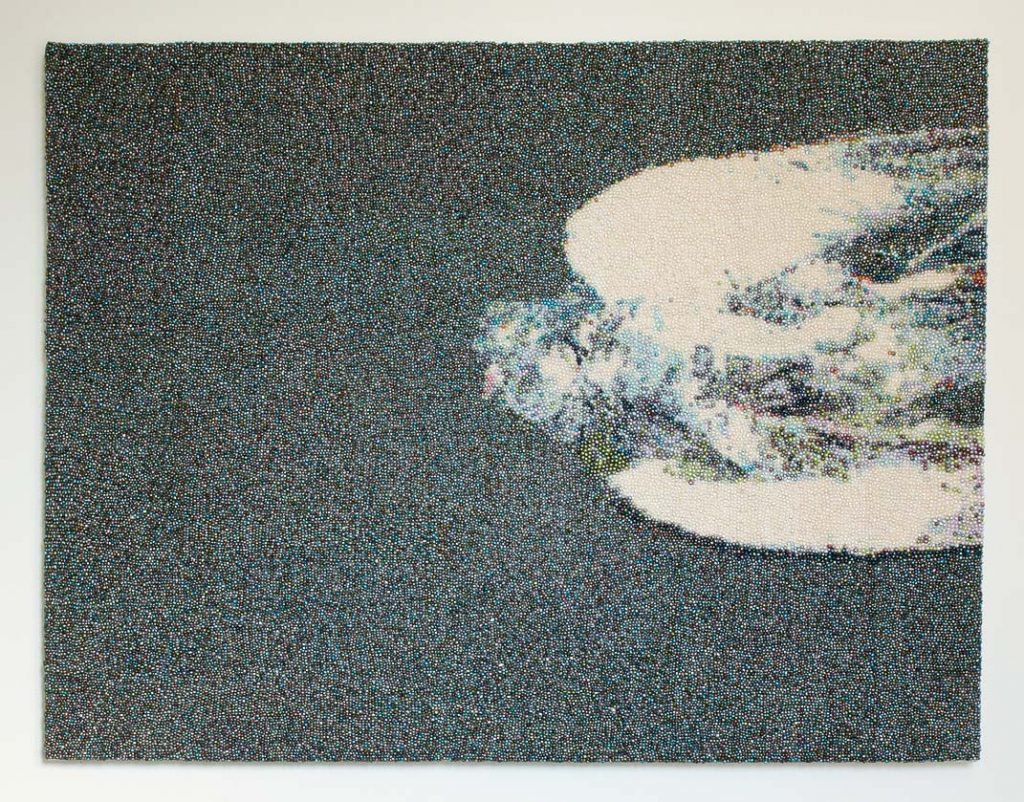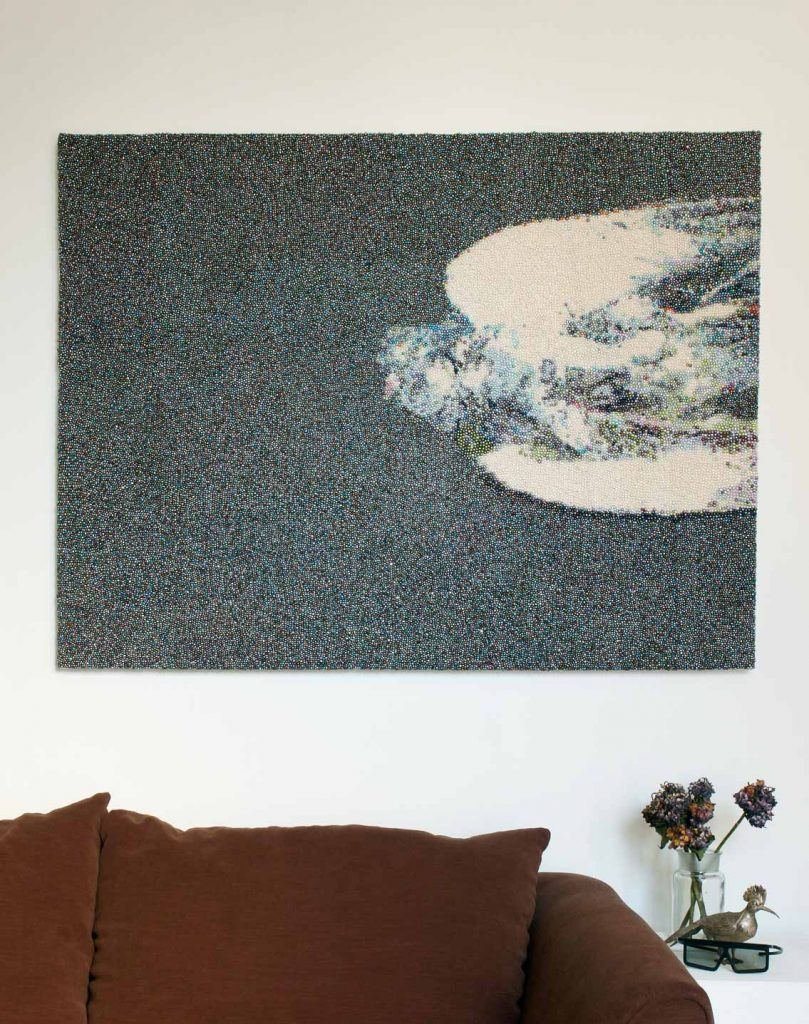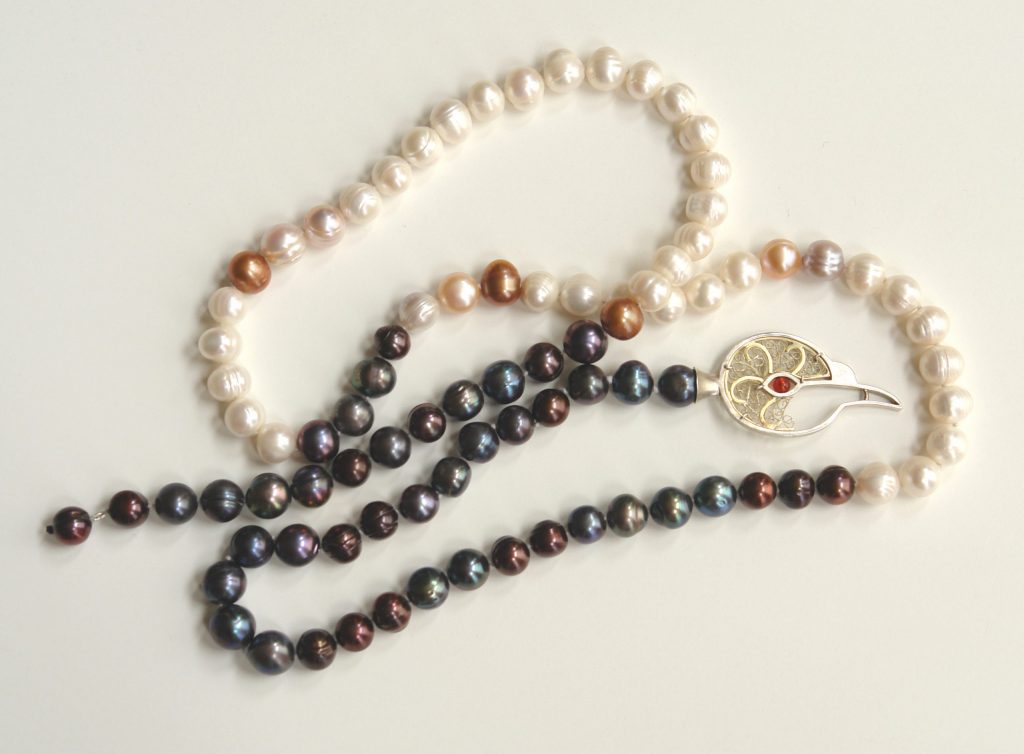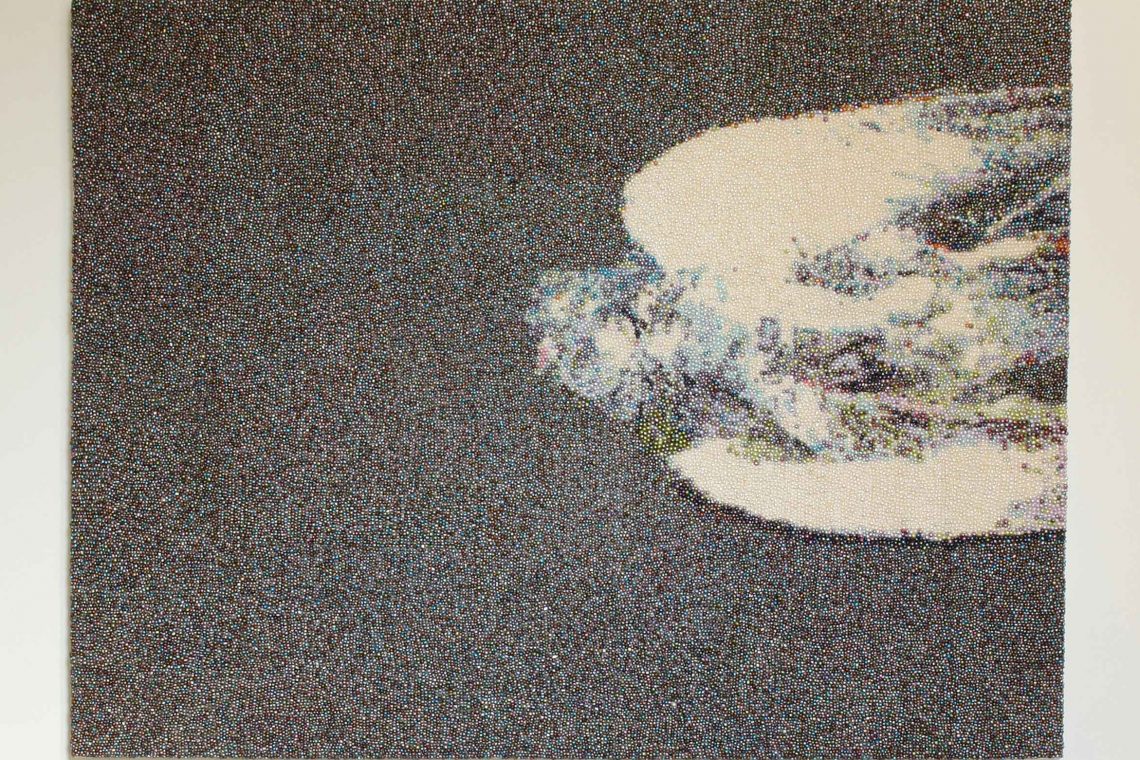When death becomes beauty
Year: 2008
Medium: Pearl Tapestry & Pearl Necklace. Tapestry. Natural fresh water pearls. Dye. Thread. Necklace. Natural fresh water pearls. Dye. 18ct ethical gold, sterling silver, Australian fire opal.
Dimensions: Canvas 1000 x 800mm. Necklace 100cm
When death becomes beauty (2008) is a necklace and tapestry made of natural freshwater pearls. The title, which suggests the conflict between aesthetics and ethics, is echoed in the luster of countless pearls that are carefully strung together to depict a dead pigeon floating on water. Like most of Lebrusan’s work, the pearl tapestry is seemingly innocent at first read, drawing audiences in with its seductive attraction before shocking them with the cold, hard truth behind the work’s materiality.
Oysters and mussels from freshwater pearl farming are marked by the stress of pollution from surrounding activities (farming, construction, wastewater). Lakes and ponds are often heavily loaded with animal manure and chemical fertilisers to invigorate the growth of mussels, gradually leading to wider ecological problems such as eutrophication – the impairment of freshwater and coastal marine ecosystems. Lebrusan responds to these issues, considering the ethical alternatives, as well as how it relates to her own femininity and responsibility as a jeweller. The riveting point in When death becomes beauty of involving the viewer in the art, is not for the appreciation, but for the interrogation. May it be freshwater pearls or recycled metal from confiscated artefacts [see ‘Blunt Blades’ (2021)], Lebrusan’s work demands constant inquiry, constant consciousness and witnessing, of what was and what is, of how it was and how it is.
The presence of death in Lebrusan’s work serves as our reminder to heed and prepare for the life-altering consequences in our lives, should we not take action to address these matters. While the aesthetic and ethical may seem like diametric opposites — through the work’s composition that harmoniously juxtaposes the two — it simultaneously asks what kind of space/time can we find to bring the two positions together?



